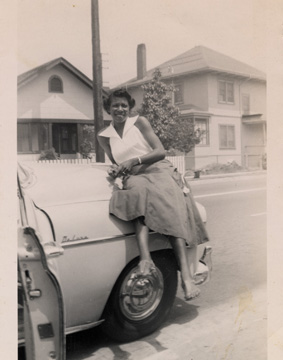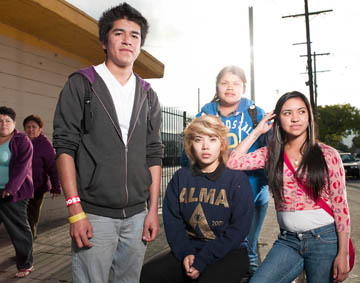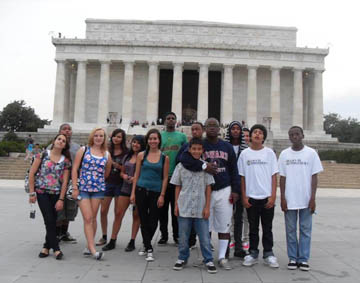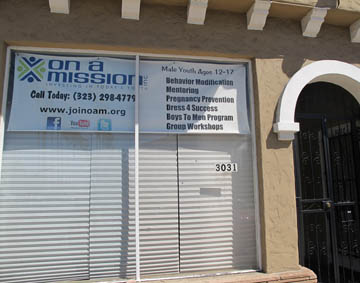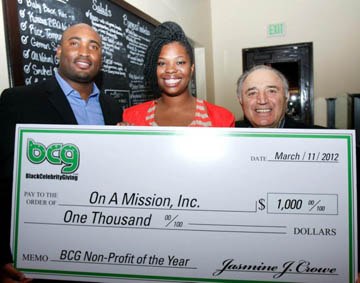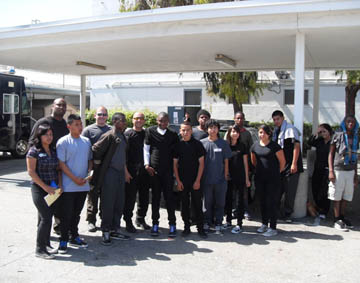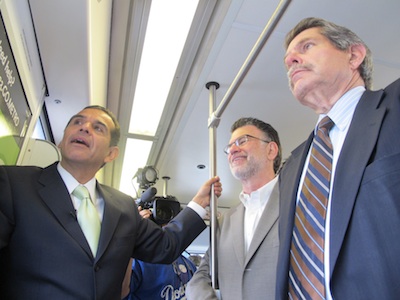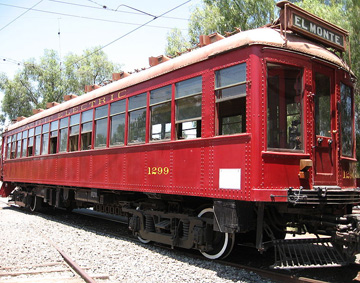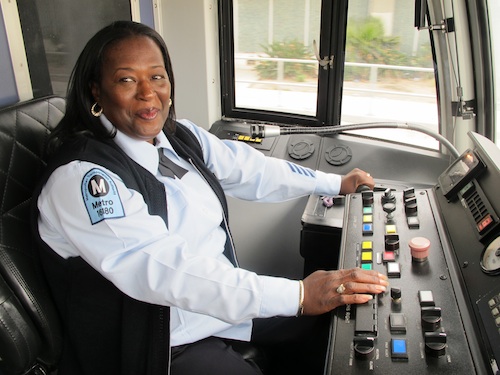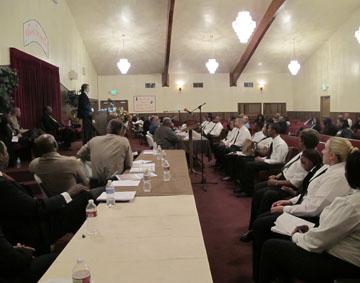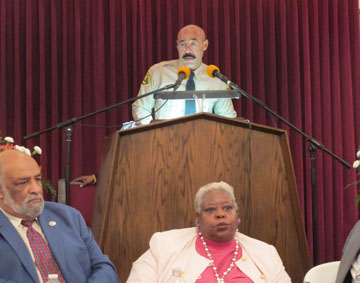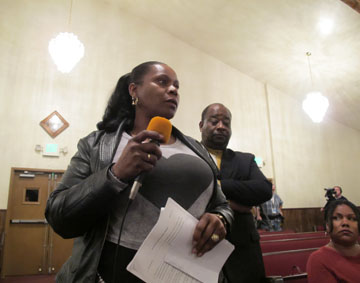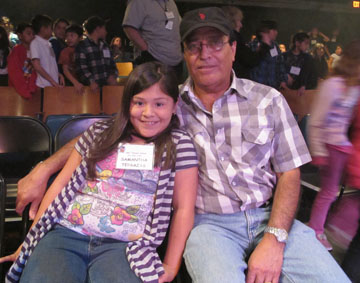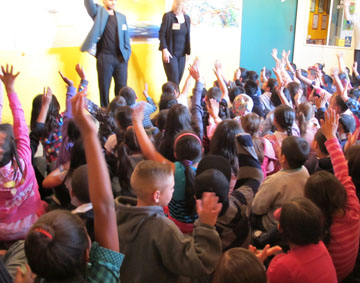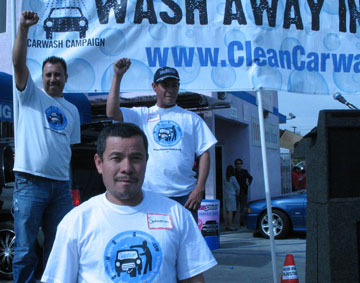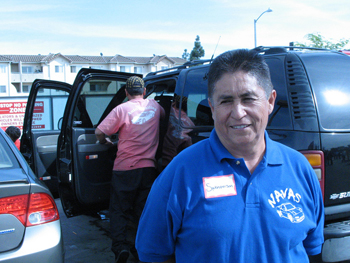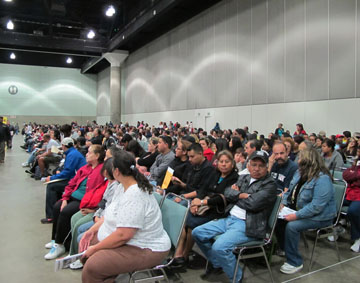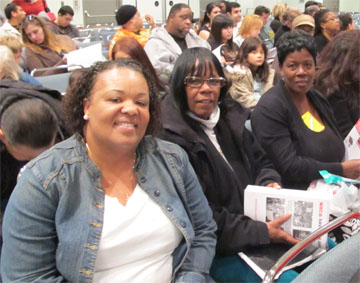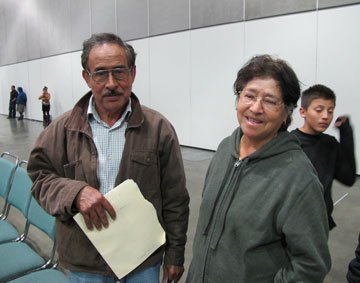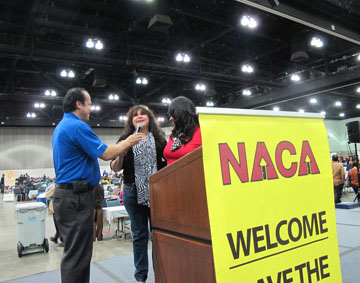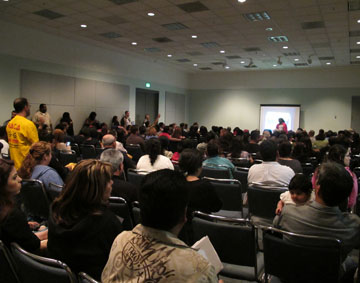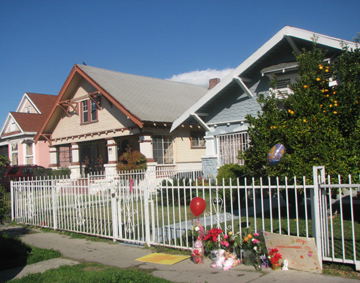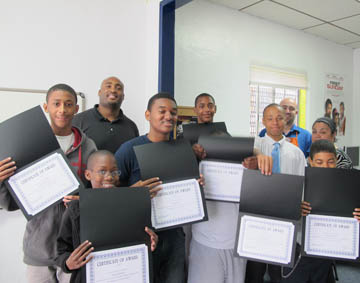
At the end of the program, the boys get their graduation certificates.
“I’ve learned that I can get a better job than what I was hoping to get and that there’s people that are going to help me stay out of trouble.” That’s one of the main lessons 13 year-old Demal Jordan Brown says he has picked up during his eight week participation in the “Boys to Men” mentoring program.
“I also learned about gangs,” says Demal. “I don’t think you can accomplish anything by being in a gang and putting yourself in harm’s way.”
Demal is one of 11 teens who graduated from the most recent “Boys to Men” program run by the non-profit On a Mission.
The eight-week course starts with lectures about the dangers of gangs and drugs and includes a visit to a prison to see, first hand, the consequences of illegal behavior. Participants are then taught about the importance of respect, responsibility and self-esteem. But most of all, they’re encouraged to think big in terms of their future. “I want to be a doctor,” states Demal.
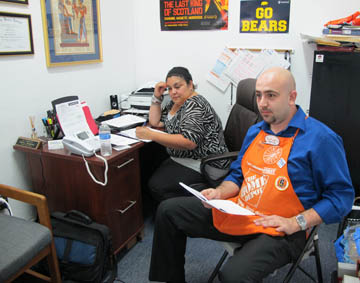
George Karnoub, Assistant Manager, and Rosie Espinoza, Associate Support Department Supervisor of the Hyde Park Home Depot, listen to one of the applicants as he interviews for a job.
The final test of the program is a mock job interview. The plan is for George Karnoub, an Assistant Manager and Rosie Espinoza, Associate Support Department Supervisor of the Hyde Park Home Depot, a strong supporter of On a Mission programs, to interview all of the participants and grade their performance.
“We want to help them prepare,” says Karnoub. “We give them feedback and advice after we finish the interviews, so they can do a better job in a real interview.”
The kids have been preparing, but they’re nervous. They’ve done their resumés and are trying to remember the pointers they got the previous week about how to talk to a prospective employer. But have they got what it takes to get hired?

Brent West, 13, shows Darian Williams, 15, how to tie his tie, prior to the mock job interview.
As they wait their turn, 13 year-old Brent West shows a struggling Darian Williams, 15, how to tie his tie. “I just can’t get it right,” exclaims Darian in frustration. He shares that his mother has already lined up a summer job for him and that he’s anxious to turn 16. “So I can start driving,” he says. He already bought a car. It’s sitting in his parent’s garage until his birthday in September.
Even though several of the class participants admitted they didn’t want to be in the program at first, in the end, they’re all enthused about it.
“I didn’t want to come, but after the first day, I liked it and wanted to keep coming,” says Brent. “One of the things I liked best was how to get a job and dress for success.”
He’s only 13, but the small-framed Brent appears to be very focused and determined to achieve his goals. “I want to get a job this summer. I would do anything,” he says. “I can sweep the floors in a barbershop or carry boxes.” Brent wants to save money for college. He aspires to attend to Stanford or Harvard University and wants to become a computer game developer.
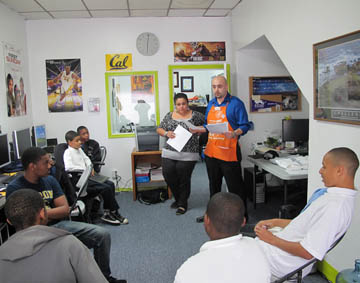
Home Depot managers give the boys feedback on their interviews.
At the end of the class, the Home Depot interviewers present the kids with their scores. They explain what they could’ve done better in order to secure the job. So who would’ve gotten hired if this would’ve been a real interview?
“Brent,” announces Espinoza. While some teammates clapped and congratulated him, others groaned. “I was sure I got it,” one boy said, disappointed he didn’t get picked.
They’re young. Some come from broken homes, others have troubled backgrounds, or are brought in by their parents to prevent them from hanging out with the wrong crowd. But they all have dreams. All it takes is for people to believe, trust and dedicate the time to help them evolve from boys to men.









